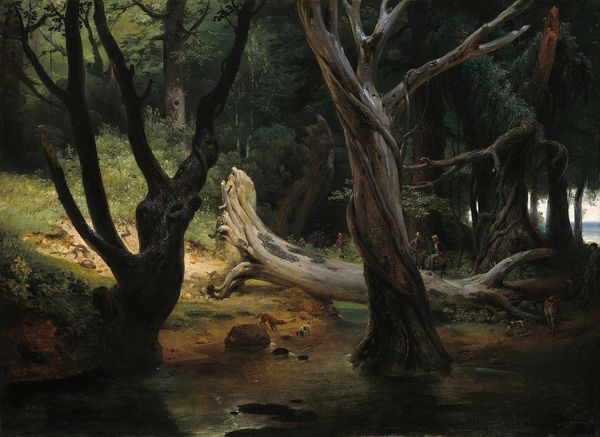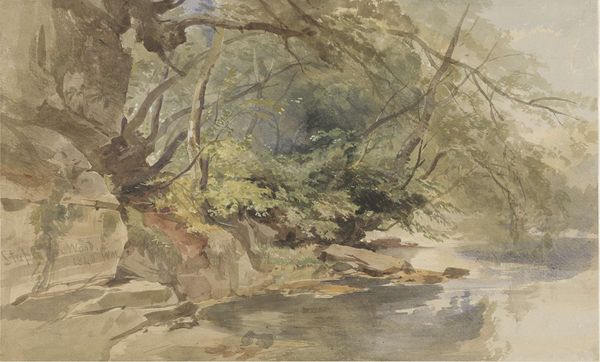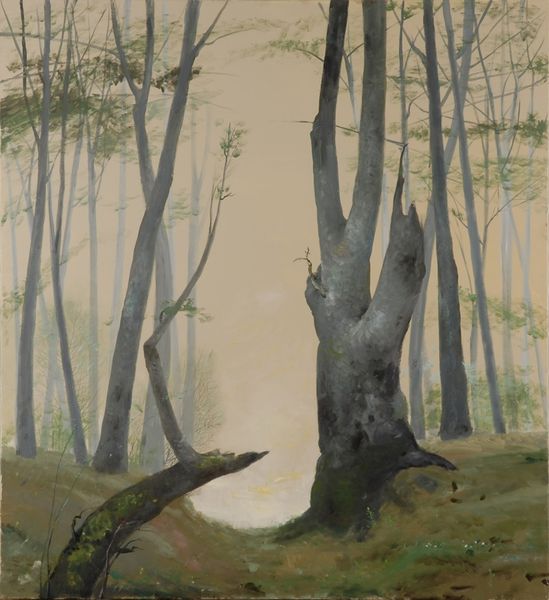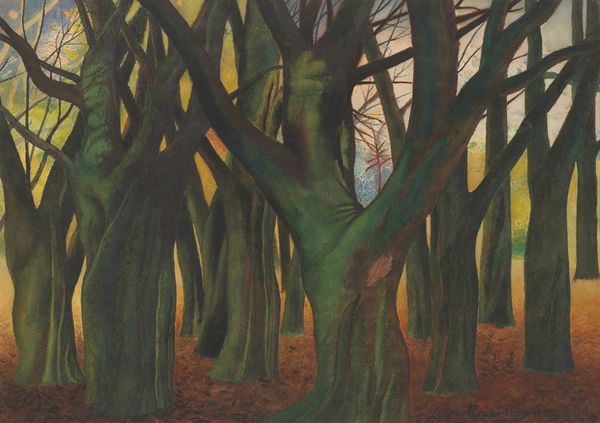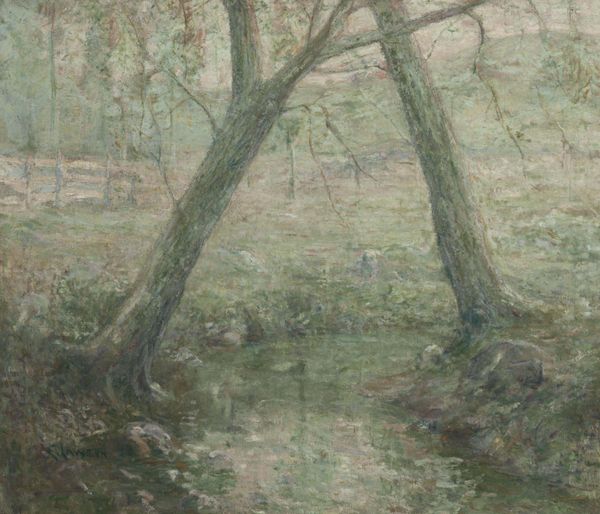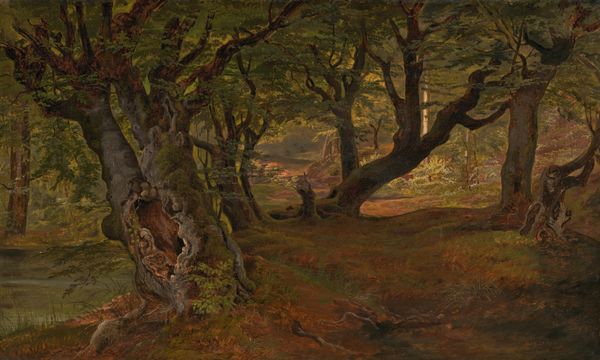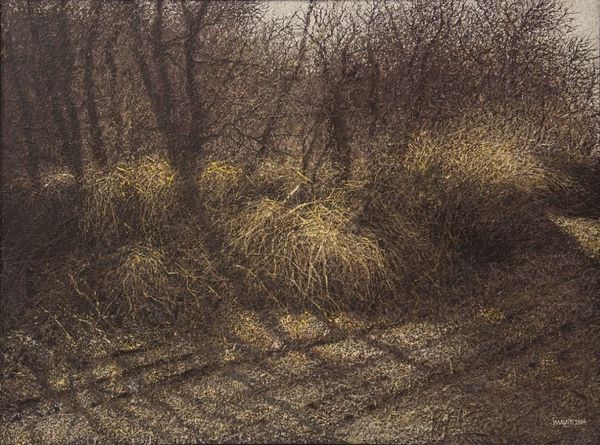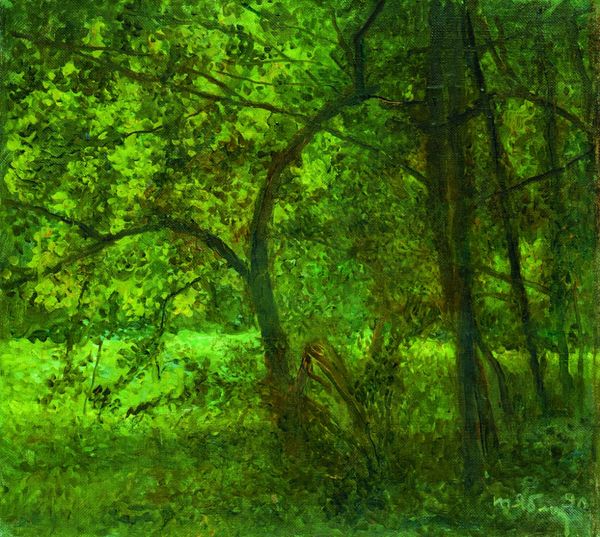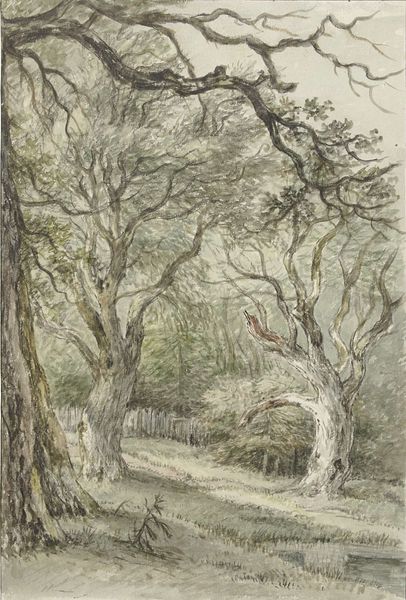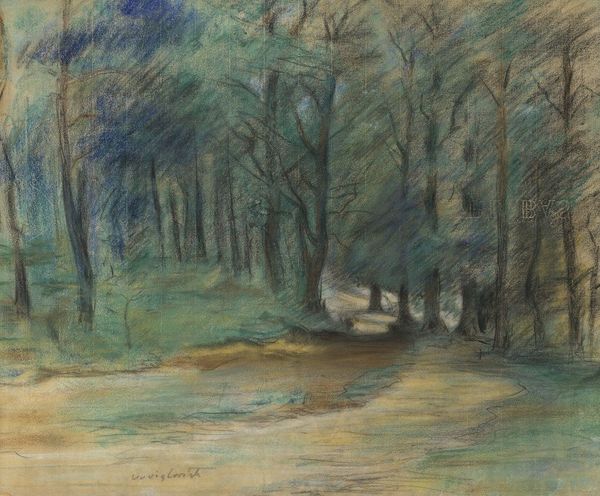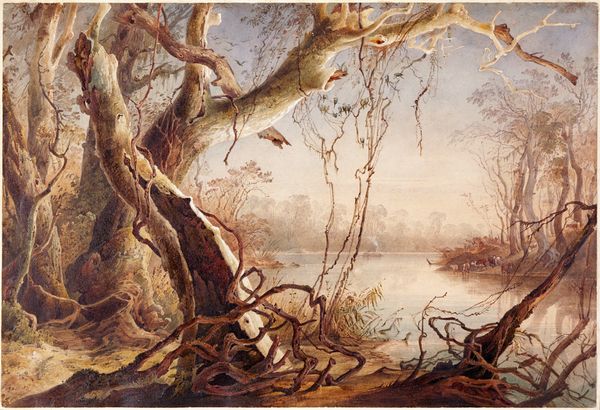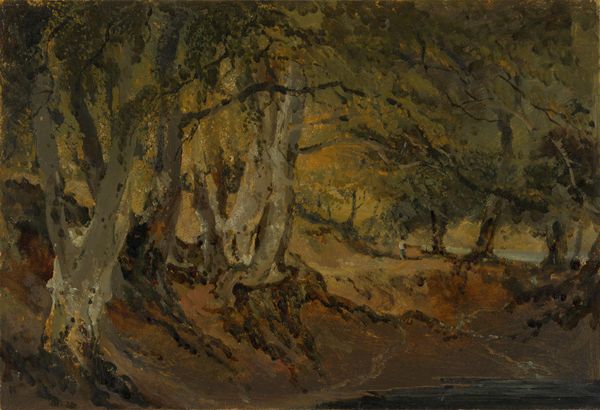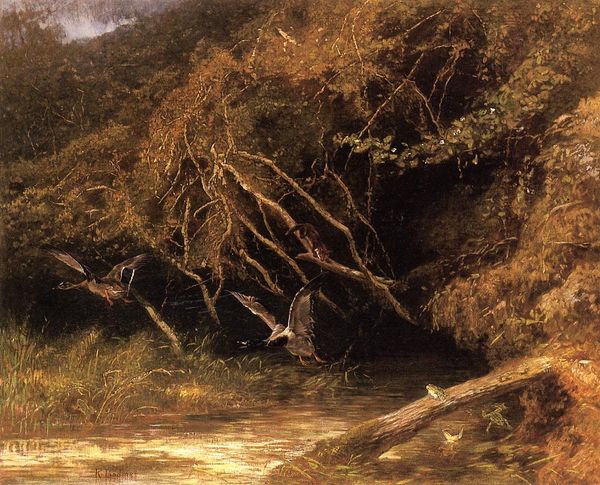
oil-paint
#
tree
#
oil-paint
#
landscape
#
oil painting
#
forest
#
plant
#
romanticism
Copyright: Public domain
Curator: Caspar David Friedrich's oil painting, "Forrest in the end of the autumn," from 1835, presents a scene of melancholic beauty. The work is currently housed at the Angermuseum in Erfurt, Germany. Editor: The atmosphere is incredibly dense and oppressive; all that bare wood pushing in on itself creates a really palpable feeling of confinement. The brown tonality gives it an almost sepia-toned, photographic quality. Curator: Yes, and that restricted palette reflects a societal shift in Germany at the time, with increasing industrialization and urbanization leading artists and intellectuals to romanticize nature as an escape. The artwork plays into the burgeoning national identity seeking solace in representations of an idealized, untouched landscape. Editor: I'm especially drawn to the textures and the artist's manipulation of the oil paint; see how those intricate, interwoven branches are articulated. You can sense Friedrich painstakingly layering and working the paint. This isn't just landscape painting; it's about showing the physical labor and engagement that crafts that illusion, which I find fascinating. The painting is so clearly made, so intentionally built. Curator: Absolutely. And in exhibiting such meticulous craftsmanship, it resonated with the era’s socio-political sentiments. Consider Friedrich's role within the intellectual and artistic circles of Dresden and the influence of figures promoting nature as a source of moral and aesthetic authority; Friedrich’s choice of subject, his composition, became tools for promoting nationalist ideologies through art. Editor: Thinking of the painting in relation to craft, the fallen tree takes on another layer of meaning. It represents the transformation and decay essential to nature's cyclical processes. But at the time this landscape was painted it represented what? Change and transformation, new possibilities and perhaps hope? Curator: I find your observation extremely insightful. Considering what the landscape stands for symbolically is critical here; it is indeed a potent blend of personal experience, natural observation, and social commentary; so many complex threads being woven together! Editor: Indeed. A truly affecting experience considering this materialist perspective! Curator: I agree; this artwork encourages us to think more deeply about the role that art plays in reflecting and shaping our understanding of place and identity.
Comments
No comments
Be the first to comment and join the conversation on the ultimate creative platform.

